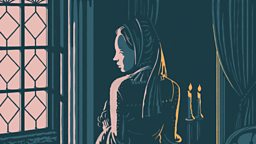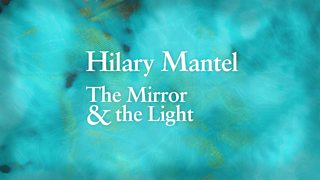Scandals, beheadings and lies: why Hilary Mantel's trilogy is so relevant now

Hilary Mantel’s Thomas Cromwell trilogy tells the story of Henry VIII’s humbly-born fixer and his rapid rise to power and prominence in the royal court.
The first two novels, Wolf Hall and Bring up the Bodies, earned Mantel the Booker Prize – twice – something no other British writer has achieved.
Fans have been clamouring for the third instalment ever since – and now the wait is over. The Mirror and the Light, which begins with the aftermath of the beheading of Anne Boleyn and climaxes with Cromwell’s fall from grace, is abridged in 15 episodes and read on Radio 4 by Anton Lesser.
In a recent edition of Start the Week, Andrew Marr and Hilary Mantel discussed her series finale and why the politics, power struggles and misogynist pressures of the Tudor realm may not be all that different to Britain today. This is what we learned.
The clamouring for political power
The Mirror and The Light covers the final four years of Cromwell’s life. By this point, Henry’s right-hand man has climbed to the top of the tree. He is involved in every department and has an eye on every aspect of government. “He’s got a finger in every pie,” says Mantel.
He’s also extremely close to his boss – the King. “He’s used that dangerous closeness to observe Henry: every blink,” says Mantel. He is even writing something he calls the “Book of Henry” – an instruction manual for those who come after.
“If you want to be in Boris Johnson’s cabinet, or if you want to serve Donald Trump, then reading this book or reading the trilogy would be a very, very good way to start,” says Marr. Cromwell is in some ways the ultimate political advisor. “Dominic Cummings eat your heart out.”
A vulnerable leader
Like our leaders today, Henry is vulnerable. He may be the King, but that doesn’t mean he feels secure. “One of the things that afflicts him is lack of absolute power, because he has parliament to answer to, he has rebellious commons, he has lack of infrastructure, difficulty of communications,” says Mantel. In many ways, these are challenges that our modern leaders still face.
And like celebrities and public figures today, he’s terrified of being publicly shamed – in Henry’s case because of his sick, aging body and impotency. “He’s terrified of being laughed at,” says the author.

A break with Europe
There are some strong parallels between Henry VIII’s England and what’s happening in post-Brexit Britain.
Just as we have split from the EU, Henry had recently broken with the Roman Catholic Church, ostracising the kingdom from much of Europe. He could no longer source vital supplies from loyal Catholic countries like Italy or Spain. For this reason, and because England didn’t have the military power to defend herself alone, Cromwell seeks a confederacy with the German princes, who have also broken with Rome. “This is the trading negotiation that’s following the great break,” says Marr.
However, unlike government today, Cromwell was keen to keep continuity, says Mantel. He was multilingual, cosmopolitan and he knew that trading relationships with Europe were crucial. “There’s definitely ambition for England to take a greater role in Europe, not a lesser role.”
The pressures of being a royal heir – or a “spare”
“The frustrating thing for Henry is that though he and his ministers, and men in general, apparently have all the power, only a woman can give him the thing he wants. And that thing is a male heir to succeed him,” says Mantel. The question that dominates his reign is, which woman will do it? And then when his third wife Jane Seymour finally gives him one, he realises he needs another – a spare. But Jane dies and is unable to provide one.
“It’s a terribly constricting world for anyone who’s close to that centre of royal bloodline: the way they behave, their options, the dangers around them,” says Marr. And in some ways, little has changed. Feeling the pressures of royal life, Prince Harry and Meghan Markle have chosen to self-exile – and the whole nation has something to say about it. “The bubbling concern and anger in the country about them feels to be very close to the popular voices in the streets of Putney and London in the 1530s, about what’s going on in the court,” says Marr.

The scrutiny inflicted on a royal wife
In the 1530s, people liked a “proper princess,” says Mantel. They didn’t like Catherine of Aragon – Henry’s first wife of over 20 years – being displaced by a gentlewoman like Anne Boleyn. Some might argue that Meghan Markle has faced a similar backlash for being “ordinary”.
Yet in those days, before the invention of cameras, the general population didn’t even know what their queen looked like. Today, with the internet and social media, the pressures have become increasingly about how a royal wife looks. “I think there’s still intense scrutiny of the bodies of royal women,” says Mantel. “There’s such a thriving trade in it – it sells papers and magazines and dominates the media – and it’s about skin on bone and colour and breeding capacity… It’s degrading.”
“We don’t cut off the heads of royal ladies these days but we do sacrifice them,” says the author.
A book for our times
The Mirror and The Light shows 16th-century England beset by rebellion at home, traitors abroad and Henry VIII still desperate for a male heir. In the centre sits Thomas Cromwell, a man who came from nowhere and has climbed to the very heights of power. These aren’t just historical novels. They are about the eternal truths and hard problems of political power, about relations between men and women, about England’s place in the wider Europe, about aging, failure, death and love.
“As you read through it you’re immersed in the world but at the same time your head is hit, glancing blows, frequently, by parallels with today,” says Marr. “Wherever you look you can find the same sort of characters around power, the same dilemmas around power, the same problems and desires for England – or similar ones for the UK as England faced then.”
And then there is the human element: “Desire for children, marital frustrations, love and the lack of it,” says Mantel. “They’re culturally inflected, but there is a core of experience that possibly doesn’t change all that much.”
The Mirror and The Light may be set in a Tudor world, but it is certainly a book for our times.
Illustrations commissioned for Hilary Mantel's ����ý Reith Lectures
Hilary Mantel on Radio 4
-
![]()
The Mirror and the Light
Anton Lesser reads the eagerly-awaited finale to Hilary Mantel's Booker-winning Thomas Cromwell series.
-
![]()
Start the Week
Hilary Mantel discusses the final chapter in the life of Thomas Cromwell with Andrew Marr.
-
![]()
Hilary Mantel – The Reith Lectures
Hilary Mantel discusses the role that history plays in our culture.
-
![]()
Hilary Mantel: How I wrote the end of the trilogy
Hilary explains what plans she has to write more historical fiction.




